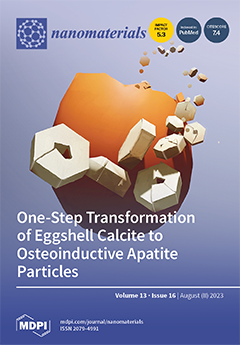All-inorganic perovskite quantum dots (CsPbX
3 QDs) (X = Cl, Br, I) have the advantages of adjustable emission position, narrow emission spectrum, high fluorescence quantum efficiency (PLQY), easy preparation, and elevated defect tolerance; therefore, they are widely used in optoelectronic devices, such as
[...] Read more.
All-inorganic perovskite quantum dots (CsPbX
3 QDs) (X = Cl, Br, I) have the advantages of adjustable emission position, narrow emission spectrum, high fluorescence quantum efficiency (PLQY), easy preparation, and elevated defect tolerance; therefore, they are widely used in optoelectronic devices, such as solar cells, light-emitting diodes, and lasers. However, their stability still constrains their development due to their intrinsic crystal structure, ionic exchange of surface ligands, and exceptional sensitivity to environmental factors, such as light, water, oxygen, and heat. Therefore, in this paper, we investigate the stability improvement of CsPbX
3 QDs and apply fabricated high-efficiency, stable perovskite QDs to solar cells to improve the performance of the cells further. In this paper, we focus on CsPbBr
3 QDs with intrinsic extreme stability and optimize CsPbBr
3 QDs using strategies, such as Mn
+ doping, ligand regulation, and polymer encapsulation, which can improve optical properties while ensuring their stability. The test results show that the above five methods can improve the strength and luminescence performance of QDs, with the best stability achieved when PMMA encapsulates QDs with a ratio of PMMA = 2:1 and PLQY increases from 60.2% to 90.1%.
Full article






